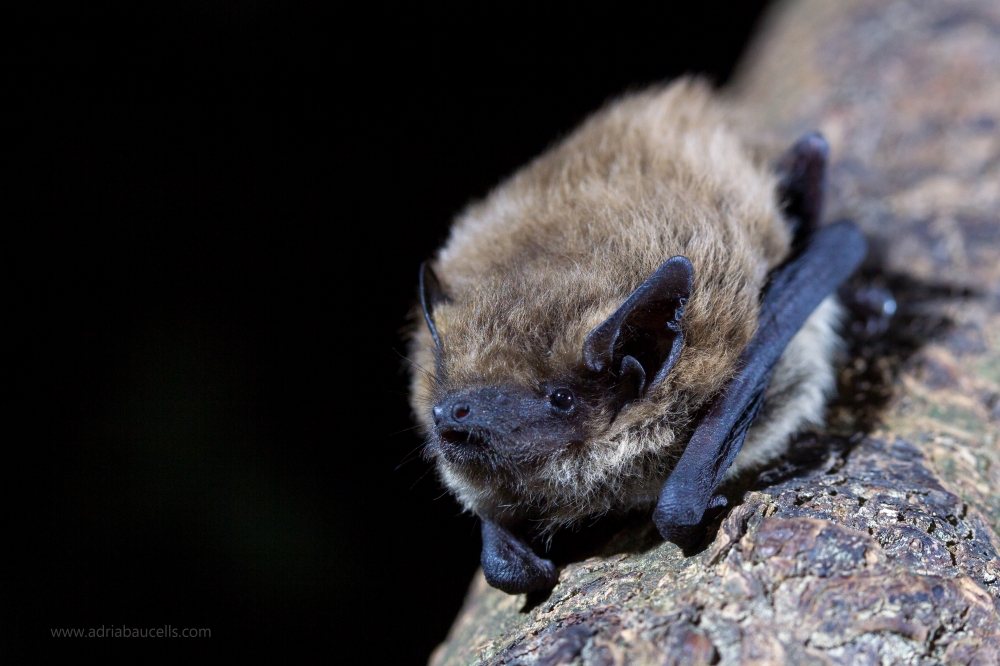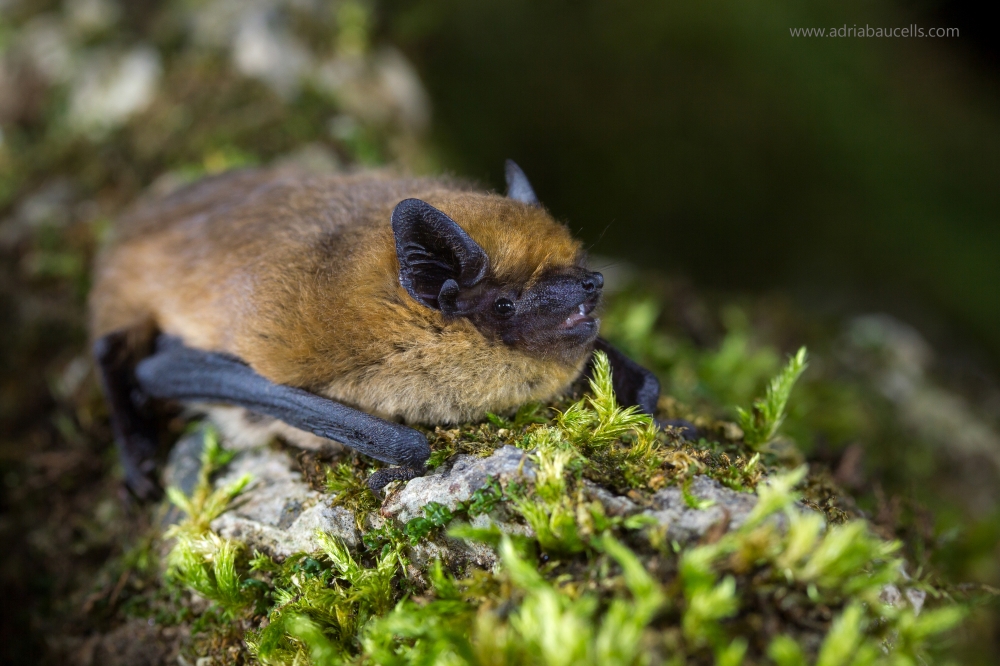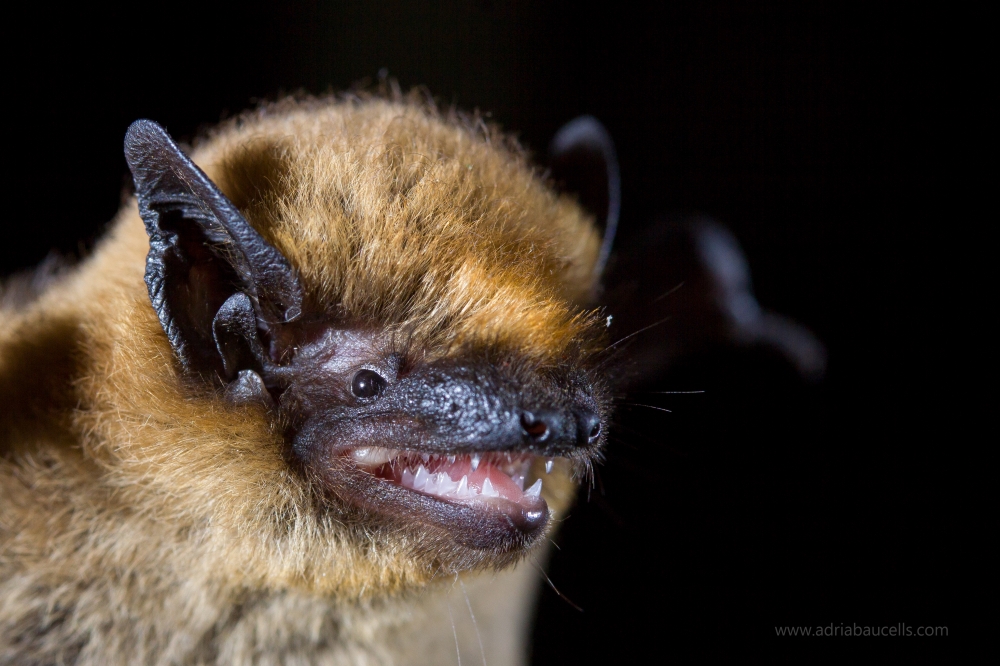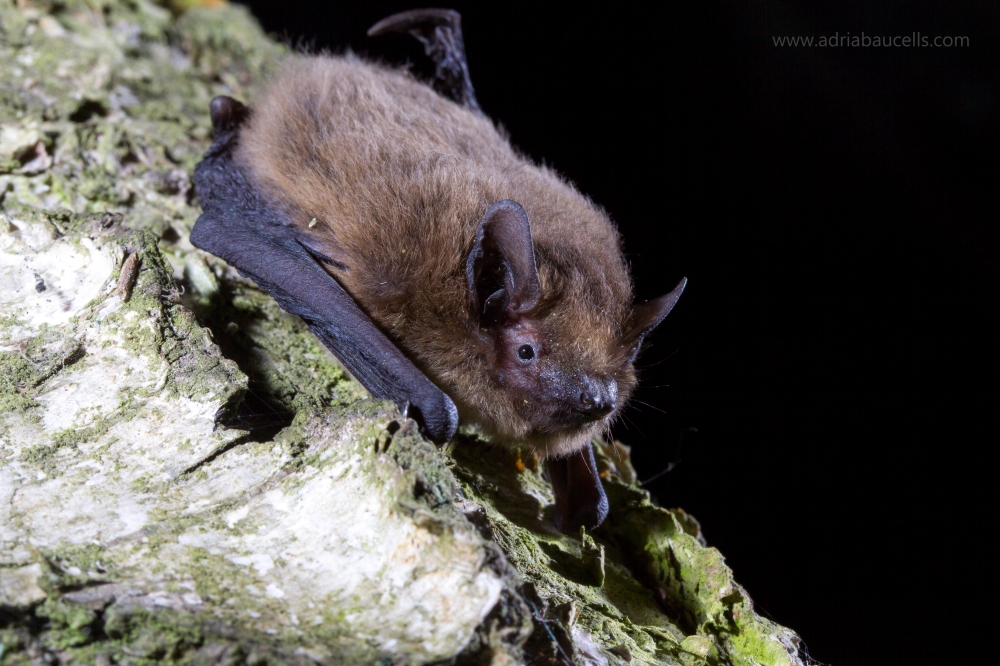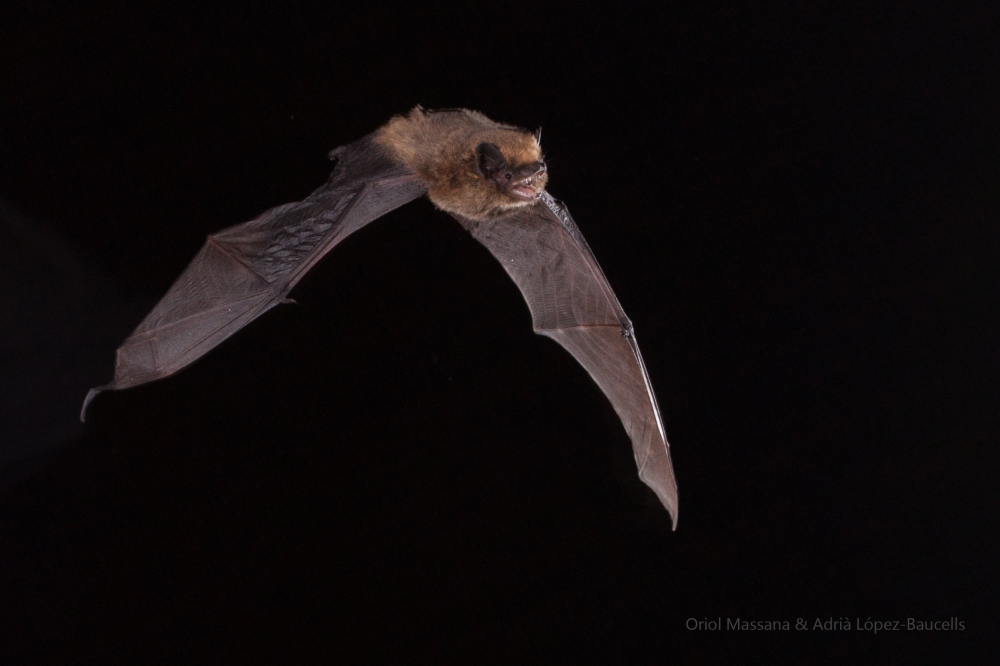Common pipistrelle bat
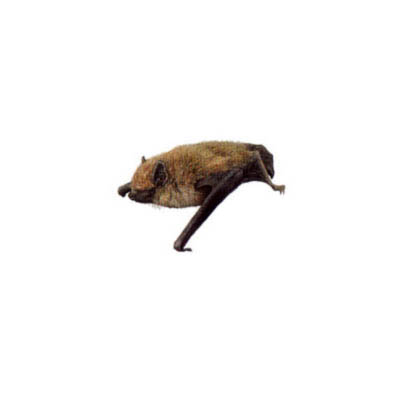
Pipistrellus pipistrellus (Schreber, 1774)
Vespertilionidae
Least Concern
| Other names | |
|---|---|
| Catalan | Pipistrel·la comuna |
| Spanish | Murciélago enano |
| English | Common pipistrelle bat |
| French | Pipistrelle comune |
| Basque | Pipistrelo arrunt |
| Galician | Morcego común |
Description
One of the smallest bats in Europe, it has a body length between 35 and 52 mm, a forearm length between 27 and 34 mm, a wingspan ranging from 180 to 250 mm, ears measuring between 8 and 11 mm, a tail between 23 and 36 mm, and weighs between 3 and 8.5 g. The dorsal fur is generally brown and can range from yellowish to blackish tones, while the ventral side is usually lighter. The skin is very dark brown, almost black, and is usually uniform even around the eyes and inside the ears, unlike the Soprano pipistrelle (Pipistrellus pygmaeus), which has lighter skin. The tragus is rounded, similar to that of other Pipistrellus species.
Until the last century, it was believed that the common pipistrelle and the Soprano pipistrelle belonged to the same species, until acoustic analysis revealed that they were two different species. Even for experts, distinguishing between the two species by hand can be challenging, and usually, characteristics of the penis and wing venation are used for differentiation.
Fotografies
Distribution
This species is distributed throughout Europe, except in the Caucasus region and the northern part of the Scandinavian Peninsula. It can also be found in northern Africa, as well as in the west and east of Asia (Iran, Afghanistan, Kazakhstan, Russia, India, Taiwan, Myanmar, and western China). The northernmost point where it has been detected is in southern Finland.
Roosts and phenology
It is an extremely anthropophilous crevice-dwelling species. Summer and breeding colonies can be found in a wide variety of cavities, cracks, and fissures in buildings, such as behind walls or under false ceilings. Isolated individuals are also found in rock crevices and under tree bark. Breeding colonies typically consist of 50 to 100 females, rarely up to 250. They usually mark the buildings where they breed with droppings, deposited during flight on walls and windows. Breeding colonies are established in May, with the birth of one or two pups in mid-June or early July. Breeding colonies typically move every 12 days. Juveniles are entirely dependent on the mother for about four weeks. Most juveniles are already sexually mature in the first autumn.
It is considered a sedentary species, and movements between breeding and hibernation roosts are usually less than 100 km, although isolated cases of up to 400 km are known. Males establish mating roosts where they attract females with courtship calls during flight. These males will form mating groups with up to 10 females. Hibernation roosts in central Europe consist of human buildings, as well as rock crevices, underground cellars, caves, and tunnels, where up to 5,000 individuals have been found hibernating together. In Slovakia and Romania, some hibernation colonies connect in cave ceilings, where the maximum number of individuals found is estimated between 30,000 and 60,000.
Habitat and diet
A highly adaptable species in terms of hunting habitats, it can be found from the middle of large cities, to rural human settlements, as well as in almost any habitat such as forests, semi-arid areas, pastures, etc. However, whenever available, it tends to choose wooded areas close to bodies of water. It can be found from sea level up to 2,000 meters in altitude.
It is a strongly generalist species, although a significant part of its diet consists of various species of diptera such as mosquitoes. Nevertheless, many other small flying insects also form part of its prey, including midges, crane flies, psychodids, water boatmen, and moths. Its diet varies significantly depending on the available hunting habitat. The hunting flight is agile and erratic. It usually patrols near linear structures like forest edges, where it captures prey in the air with swift maneuvers. Some individuals may hunt for hours in specific locations, such as around nighttime city lights.
Echolocation
The echolocation of this species typically consists of frequency-modulated quasi-constant frequency (FM-QCF) calls with a maximum energy frequency ranging between 41-48 kHz. However, echolocation is highly plastic, and more modulated calls can vary between 43-50 kHz. The echolocation of this species is highly variable and adaptable, allowing it to easily adjust to different landscapes and environmental conditions. Nevertheless, the common pipistrelle is acoustically distinguishable from other European bats.
Status
According to the IUCN Red List, the common pipistrelle is considered Least Concern, with a stable population trend. Despite being protected by national laws, Eurobats agreement, the Bern Convention, and the European Habitats and Species Directive, it is common throughout its distribution, with populations that have been increasing for years and continue to grow. However, due to its proximity to urban areas, the primary threats in certain locations may include domestic animals and disturbances in roosts, as well as the use of pesticides.
